Mazda 3 Service Manual: Charcoal Canister Inspection [Mzr 2.0, Mzr 2.5]
Leakage Inspection
1. Perform the following procedures:
-
Assemble the hose used for inspection to port A.
-
Cover ports B and C with the caps.
Except for Mexico
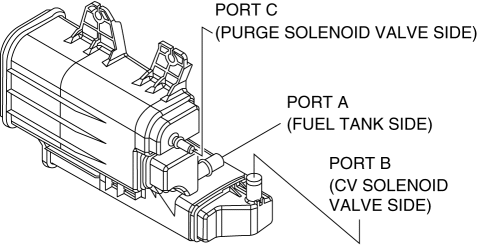
Mexico
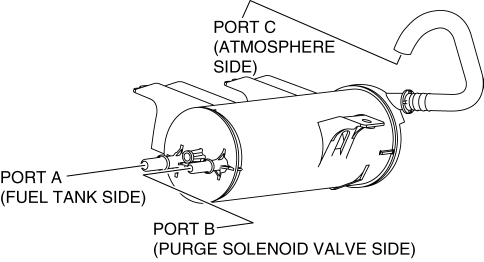
CAUTION:
-
Do not apply a pressure 20 kPa {150 mmHg, 5.91 inHg} or more to the charcoal canister for 1 min. or more. Doing so will damage the charcoal canister.
2. Apply pressure (19.6 kPa {147 mmHg, 5.79 inHg}
) through the hose, and verify that air does not leak from the charcoal canister.
Except for Mexico
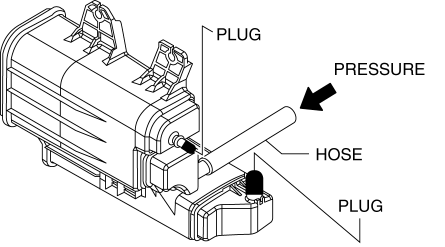
Mexico
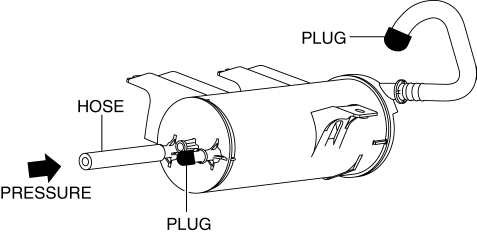
-
If there is airflow, replace the charcoal canister..
-
If there is no airflow, perform the following “Airflow Inspection”.
Airflow Inspection
1. Perform the following procedure to verify the charcoal canister airflow.
-
Between port A and port B
-
Plug the port C.
Except for Mexico

Mexico
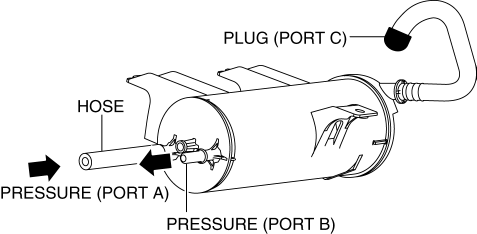
-
Apply a pressure of 19.6 kPa {147 mmHg, 5.79 inHg}
to port A.
-
Verify that there is airflow from port B.
-
If there is no airflow, replace the charcoal canister..
-
Between port A and port C
-
Plug the port B.
Except for Mexico
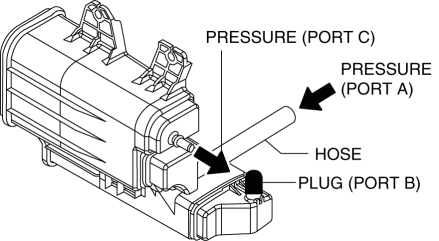
Mexico
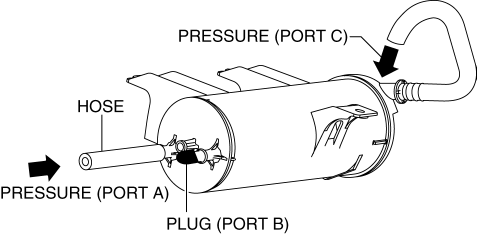
-
Apply a pressure of 19.6 kPa {147 mmHg, 5.79 inHg}
to port A.
-
Verify that there is airflow from port C.
-
If there is no airflow, replace the charcoal canister..
-
Between port B and port C
-
Plug the port A.
Except for Mexico

Mexico
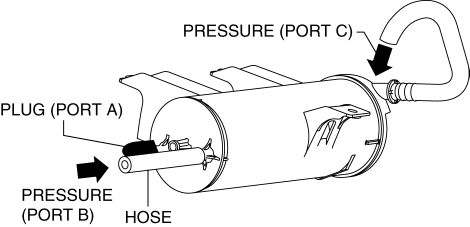
-
Apply a pressure of 19.6 kPa {147 mmHg, 5.79 inHg}
to port B.
-
Verify that there is airflow from port C.
-
If there is no airflow, replace the charcoal canister..
 Catch Tank Inspection [Skyactiv G 2.0]
Catch Tank Inspection [Skyactiv G 2.0]
1. Remove the catch tank..
2. Plug the catch tank of the purge solenoid valve side.
3. Inspect for air leakage when blowing air pressure from charcoal canister side.
If there is air l ...
 Charcoal Canister Removal/Installation [Mzr 2.0, Mzr 2.5]
Charcoal Canister Removal/Installation [Mzr 2.0, Mzr 2.5]
Except for Mexico
1. Remove in the order indicated in the table.
1
Evaporative hose
2
Quick release connector
(See QUICK RELEASE CONNECTOR ...
Other materials:
PCM Inspection [Mzr 2.0, Mzr 2.5]
Using M-MDS
NOTE:
PIDs for the following parts are not available on this model. Go to the appropriate
part inspection page.
CMP sensor
Main relay
1. Connect the M-MDS to the DLC-2.
2. Switch the ignition to ON.
3. Measure the PID value.
...
How to Use Pandora
What is Pandora ® ?
Pandora ® is free personalized Internet radio. Simply enter a favorite
artist, track, genre,
and Pandora ® will create a personalized station that plays their music and more
like it.
Rate songs by giving thumbs-up and thumbs-down feedback to further refine your
station ...
Air Fuel Ratio (A/F) Sensor Removal/Installation [Mzr 2.0, Mzr 2.5]
WARNING:
A hot engine and exhaust system can cause severe burns. Turn off the engine
and wait until they are cool before removing the exhaust system.
1. Remove the battery cover..
2. Disconnect the negative battery cable..
3. Remove the plug hole plate..
4. Remove the air clea ...
